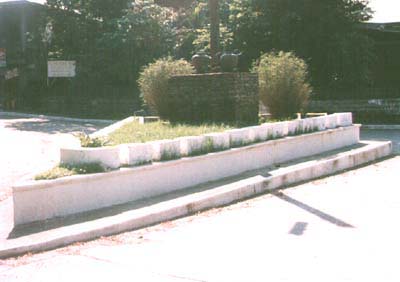

| BASI REVOLT OF 1807 |
 |
| In 1807, there was Basi Revolt that happened in Piddig.
Already put partifying Manila against a possible attack by the English, Spanish Governor General Mariano Folgeras has to attend to another unpleasant task; imposing an unpopular economic measure called the wine monopoly on the island colony. By remote control from Madrid, like the monopoly, the Spanish Cortes compelled Filipinos to acquire their stocks only from government stores. This sparkled a general resentment from the populace particularly from defiant winemakers in this small town. Emigrant Scottish dealers had at one time parlayed their expertise on grain fermentation acquire in the Old World into a thriving whiskey industry in a section of Pennsylvania in the New World, and took up arms when the British master imposed similar sanctions. In like manner, the people of Piddig assembled to do battle against overwhelming odds to dismantle the monopoly. The population of Piddig drew its livelihood from a homemade wine called "basi" made from crushed sugarcane juice compounded with elements like barks and berries from local trees. The restaurant brew is a mellow pale red drink prized as a restorative somewhat resembling sharteuse, the fruits liquor flavored with a variety of herbs and plants the monk Bernardo Vincellie first conducted in 1510 at the Benedictine monastery in Focamp, France. Rather fight than switch, Piddig townsfolk on September 16, 1907 angrily took off after the Spanish army with the use of different weapons that included homemade bows and arrow, bamboo spears, garded scythes and kitchen knives. Incredibly, in a terrible swift swath, the ill-equipped rebels, bucking artillery and all the modern hardware the Spanish arsenal could master, promptly took possessions of outlying towns faster than an Arab could say Israeli. In lightning thrusts, the angered winmakers brought the war to much scattered place as Sto. Domingo, the southernmost town of Ilocos Norte and 40 miles away and San Ildefonso which is seven kilometers north of Vigan, the capital of the neighboring province. And where so flushed with success there was already brave talk of storming Manila. When the revolt threatened to spread upward. An alarmed Spanish alcalde of Vigan started a counter-offensive in the town of Badoc near the rebel base. Employing commons and a composite force of regular militia and often unwilling elements of the guardia civil, the revolt was finally contained aster a forthnight - September 28, 1807. Basi as a drink outlawed and the infamous wine monopoly remained triumphant. Even today, age-old beliefs attend the making of basi. For instance, Piddig folks still prefer harvesting sugarcane that would go into basi only on clear moonlight nights. And while a few modest distilleries have sprung up in the environs, a few Piddig residents still fall back on carabaos to turn the mills. |





